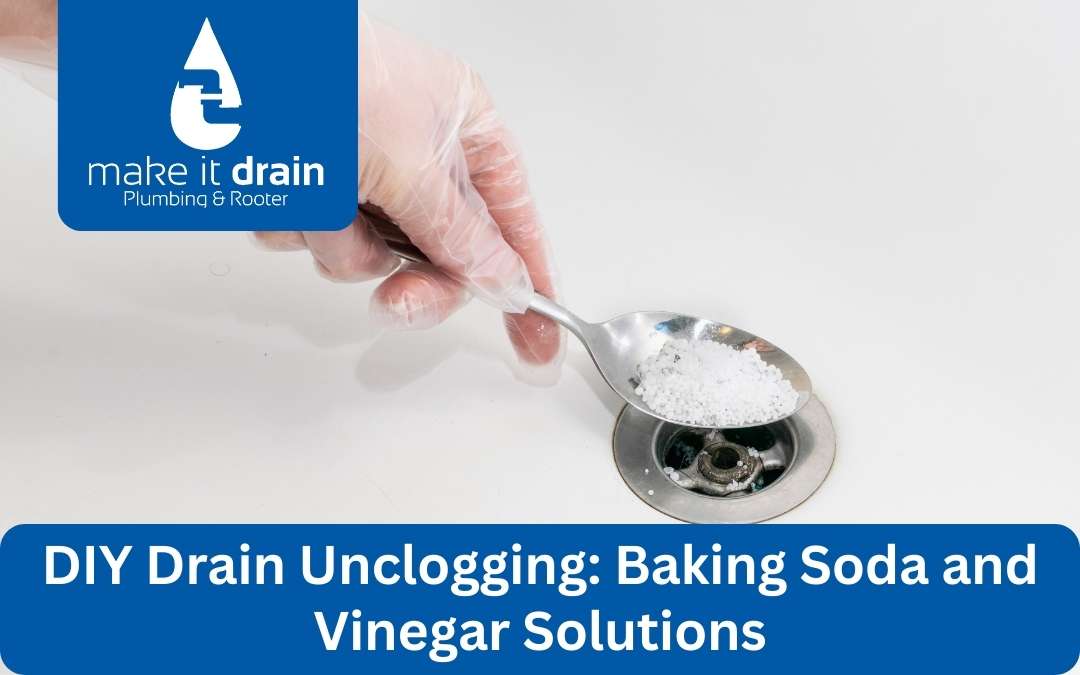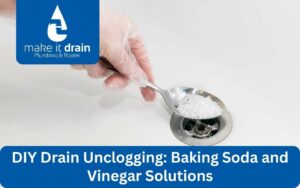Unclogging a drain doesn’t always require a call to the plumber or the use of harsh chemicals. Two ingredients that you likely already have in your kitchen—baking soda and vinegar—can be an effective and eco-friendly solution to your problem. This guide will walk you through how to use these common household items to unclog your drains and explain the science behind why this method works.
What You Need
– Baking soda (sodium bicarbonate)
– White vinegar
– Boiling water
– Protective gloves (optional)
– A cup or measuring tools
Instructions
Prepare the Drain
Start by removing any visible debris from the drain opening. If your sink has a stopper, take it out to ensure the solution gets down into the drain.
Flush With Boiling Water
Boil a kettle of water and carefully pour it down the drain. This initial flush can help melt fats and loosen up some of the buildup that’s causing the blockage.
Add Baking Soda
Measure out about 1 cup of baking soda and pour it directly into the drain. If the drain is wet, the baking soda will begin to clump and start working on the grime.
Add Vinegar
Measure out 1 cup of white vinegar and pour it over the baking soda in the drain. The combination will start to fizz and bubble, which is normal and indicates that the reaction is working.
Cover the Drain
If possible, cover the drain with a plug or a small saucer to keep the reaction below the surface. This helps force the fizzing action to work its way through the clog.
Wait
Let the mixture sit for at least an hour, though leaving it overnight can provide the best results. The longer it sits, the more time it has to break down the clog.
Flush Again
Boil another kettle of water and flush the drain with the hot water. This helps wash away the loosened debris and baking soda/vinegar solution.
The Science Behind It
The effectiveness of this drain cleaning method comes from the chemical reaction between baking soda (a base) and vinegar (an acid). When combined, they react to form carbon dioxide (CO2) gas and sodium acetate. This fizzy action helps to mechanically loosen and break down the gunk, grease, and hair that’s clogging the drain. The boiling water helps to melt any greasy substances, making it easier for the reaction to carry away the debris when you finally flush the drain.
Tips for Success
Use this method as a preventive measure once a month to keep drains clear.
For tougher clogs, repeating the process a couple of times may be necessary.
Always be cautious when handling boiling water to prevent burns.
Using baking soda and vinegar is a safe, natural, and cost-effective way to deal with clogged drains. Not only does it spare you the expense of a plumber, but it also avoids the environmental impact of chemical drain cleaners. With these simple steps, you can keep your drains flowing smoothly using ingredients from your pantry.
Need a Professional Touch?
While DIY solutions work for many minor clogs, some blockages are stubborn and require professional intervention. If you’ve tried the above method and your drain still isn’t clearing, it might be time to call in the experts. Make it Drain Plumbing & Rooter is here to help with any drain that won’t unclog with a home remedy. Our team of experienced professionals can tackle even the toughest blockages, ensuring your plumbing is running smoothly. Don’t let a clogged drain disrupt your day— for around-the-clock plumbing service contact Make it Drain Plumbing & Rooter today!






